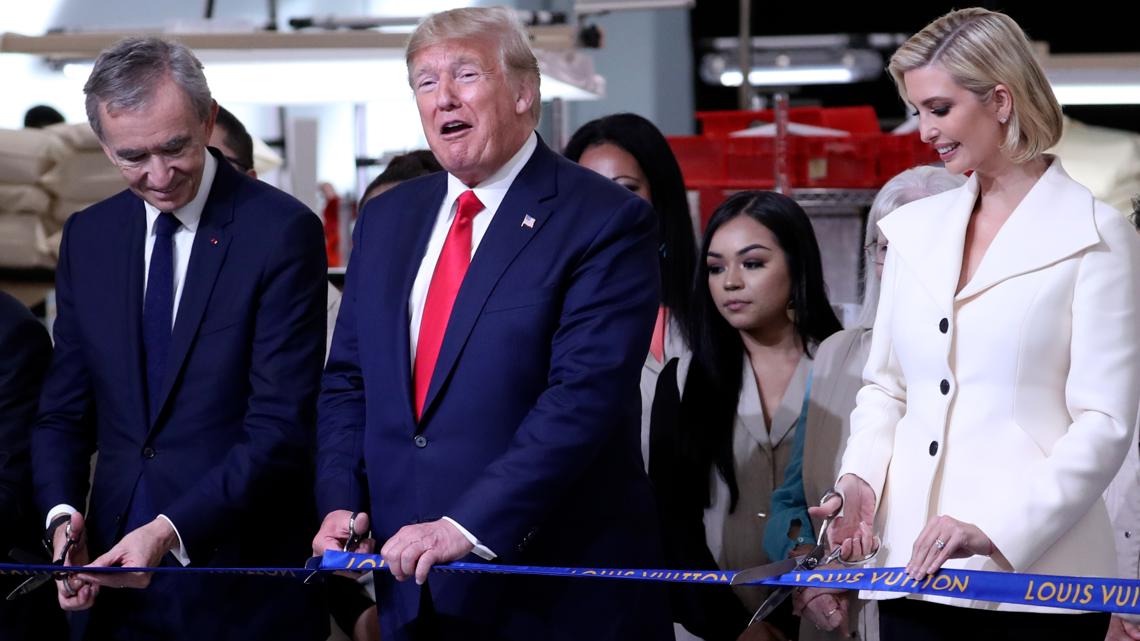A Reuters report found that a Johnson County LVMH plant is underperforming compared to its foreign counterparts. Johnson County officials respond.
JOHNSON COUNTY, Texas — A once-touted Johnson County Louis Vuitton factory is one of the company’s worst-performing, struggles to train workers and has not employed as many people as initially promised, according to a report from Reuters.
The report, which was published April 10, details numerous problems at the factory that was once touted as an example of America’s manufacturing capabilities. LVMH, Louis Vuitton’s parent company, opened the plant six years ago as part of its plan to build its U.S. production footprint. Then-President Donald Trump attended the ribbon-cutting in October 2019.
The factory is located on a ranch called Rochambeau near Alvarado in Johnson County. Louis Vuitton’s bags are typically made at French, Spanish or Italian leather ateliers, Reuters reported.
Reuters reported that LVMH has fallen short of its hiring goals by about 200 people. However, Johnson County Judge Christopher Boedeker said in a statement to WFAA that LVMH has complied with the terms outlined in the tax abatement agreement.
“It is important to note that the guidelines are not an entitlement to tax incentives, and the County is cautious in granting abatements to projects that are likely to have an overall positive impact on the community and local economy,” Boedeker said. “To my knowledge, LVMH has complied with the terms of their agreement with the County.”


In 2017, two years before the factory opened, LVMH told the county it expected to hire 500 people in five years, the report states. At the ribbon-cutting ceremony in 2019, the company’s CEO Bernard Arnault said, “We will create approximately 1,000 high-skilled jobs here at Rochambeau over the next five years.”
However, by February 2025, the factory had only hired 300 workers, Damien Verbrigghe, Louis Vuitton’s international manufacturing director, said. Boedeker said the factory complies with the tax incentive deal provided by the county.
LVMH received a tax break from Johnson County, including a 10-year, 75% property tax cut worth $29 million, Reuters reported. The abatement granted by Johnson County required an initial capital investment worth $20 million and employment in excess of 226, Boedeker said.
“In the case of LVMH, they remain fully compliant with the capital investment requirements and the employee-headcount requirements of their agreement,” Boedeker said.
The initial Johnson County workshop cost $30 million to build, according to a 2017 filing obtained by Reuters. A second workshop, completed last year, cost $22 million, Reuters reported. Workers at the plant are paid $17 per hour, according to Reuters. Louis Vuitton bags sell for $1,500 and more at retail.
“It is important to note that tax abatements forego a portion of the increase in tax revenue due to development of property,” Boedeker said. “Johnson County has developed criteria to guide the use of tax incentives to ensure that they are used for projects that benefit the County, existing taxpayers, and new development.”
LVMH moves jobs from California to Texas
Since opening, the Johnson County factory has struggled with quality control, hiring, and employee retention, Reuters reported, using interviews with 11 former Louis Vuitton employees. Despite its challenges, the company plans to move workers from its California factories to Texas, the report revealed.
“The ramp-up was harder than we thought it would be, that’s true,” Ludovic Pauchard, Louis Vuitton’s industrial director, told Reuters.
Errors made by workers at the plant led to the waste of as many as 40% of the leather hides, Reuters reported. The industry standard is 20% waste, according to the article.
The company plans to move at least two California production sites to Texas, Reuters reported for the first time. California workers were told they would have to move to Texas by 2028 or quit, according to Reuters.
Johnson County is one of the fastest-growing counties in Texas, up 19.2% since 2020, the Dallas Business Journal previously reported. By 2030, another 60,000 people are expected to move to Johnson County, WFAA previously reported.







